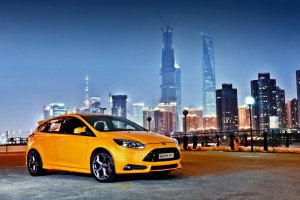With the U.S. market continuing its rebound and Europe finally showing signs of recovery after a long economic slump, global auto sales are expected to reach a new record of nearly 89 million vehicles this year.
But with the Russian market slumping and China showing signs of a slowdown, IHS Automotive cautions, the pace of growth will be a “slower, not lower” 2.4% in 2015. All told, only two of the critical BRIC markets are expected to report sales gains.
Already the world’s largest automotive market, China will continue to lead the way in 2015, IHS anticipates. But don’t expect the high double-digit growth that market had been experiencing earlier in the new millennium. The forecast is for something closer to 7%, which would still drive the Chinese market to sales of 25.2 million vehicles.
The challenge is an overall slowdown in the Chinese economy, driven by industrial overcapacity and weakness in the real estate sector, the consulting firm notes. On the positive side, Chinese consumers who long have had to pay cash for their cars now have better access to automotive financing. And there’s been rapid growth in the number of dealerships across the country, especially in the smaller cities.
(GM and its Chinese partners look to expand into Indonesia. Click Herefor the story.)
In many ways, the Chinese market is coming to reflect, more and more, what has been happening in the U.S. Sport-utility vehicles have become the fastest-growing segment and their share is projected ““We see SUV market share (as percent of passenger vehicle sales) to increase from 26% in 2014 to 28%,” according to Lin Huaibin, manager, China light vehicle sales forecast, IHS Automotive, “as consumers look to this segment to address evolving transportation needs.”
North American sales have been outstripping forecasts since the recovery began gaining traction in 2011, and the consulting firm expects to see sales in the region climb 2.5% this year, to more than 20 million.
“Although the economic conditions and pace of recovery differ slightly among the North American countries, consumer confidence, credit availability and pent-up demand have played key roles in sustaining auto demand momentum since the Great Recession,” said Chris Hopson, manager, North American light vehicle sales forecasting.
The situation is quite different in Latin America where sales dropped about 10% last year compared to a strong 2013. The IHS analysis notes, “Uncertainty lingers over Argentina, Brazil, Chile and Venezuela for 2015,” though each of those countries faces its own unique issues.
Argentina, for example, is facing uncontrolled inflation and a weakening of its currency. Tight credit has put the squeeze on Brazilian motorists. Chile faces a weakening economy. And slumping oil prices are bringing the Venezuelan market to the edge of collapse.
(Is Cuba a hidden trove of classic, collectible cars. Click Here for the story.)
As for Europe, “The size of the market contraction in Russia is the biggest wild card facing vehicle manufacturers across the European continent, if not the world, in 2015 and 2016,” warned IHS chief automotive economist Nigel Griffiths.
The good news is that Western Europe finally began to see daylight after its long recession, car sales climbing 5% last year. That is expected to be followed by a 3% increase in 2015. But with the ruble collapsing, Russian vehicle prices could rise as much as 20%, leading to a 27% decline in sales compared to 2014, the forecast anticipates.
The auto industry, on the whole, faces a mixture of head and tailwinds. Declining oil prices and reduced commodity costs will clearly work to the advantage of automakers and auto buyers alike, but IHS stresses that doing business is becoming more and more unpredictable – a recipe for slower growth.
(Honda earnings hammered by recalls, weak Japanese sales. Click Herefor the full story.)

